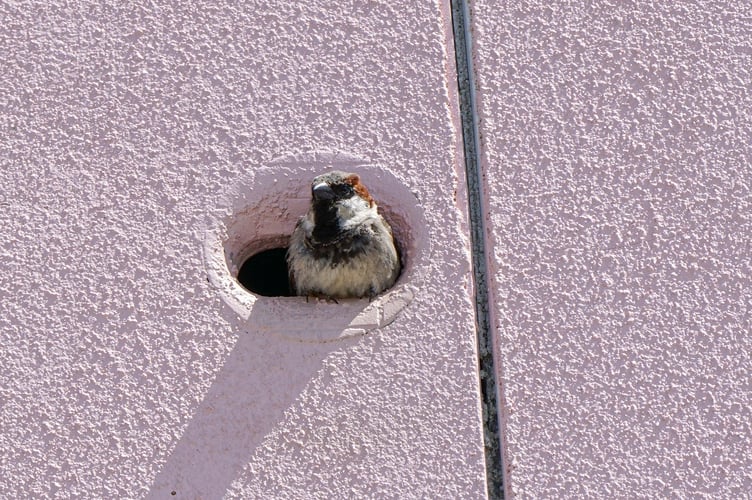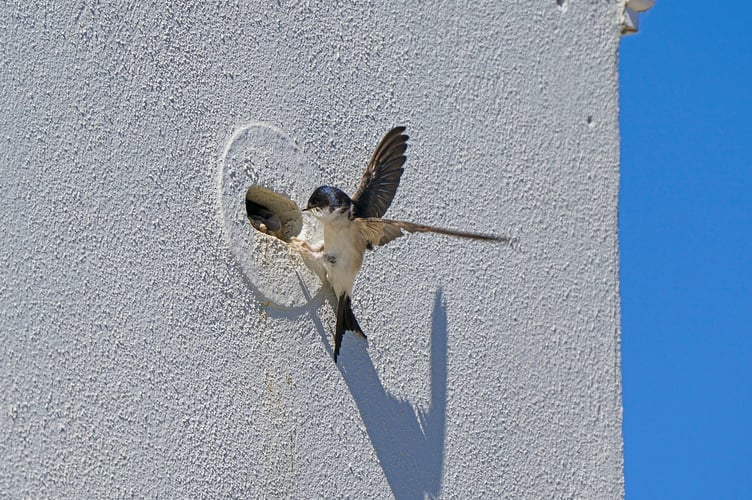A PIONEERING Duchy of Cornwall initiative to boost biodiversity at its developments in Newquay and Truro is marking 10 years of success.
There have been to date 1,289 integrated nest boxes incorporated into the Duchy's projects at Nansledan and Tregunnel Hill in Newquay, Trevethow Riel in Truro, and Poundbury in Dorset.

The Duchy has been working with the RSPB for a decade to build nest boxes into the walls of its new homes and buildings as part of measures to enhance wildlife across its communities and to encourage other new developments to do the same.

It has committed to installing an average of one nest box per home built, including at its proposed new 2,500-home development at South East Faversham in Kent.
Now the latest annual survey of nest boxes has shown that almost half of them, 49 per cent, showed signs of use in 2024, which is a seven percentage point increase on the year before, which was 42 per cent.
The increase was four percentage points in the year prior to that and there is evidence to suggest that the longer the nest boxes have been in place, the more likely they are to be used.
The nest boxes are among a range of wildlife enhancement measures that the Duchy of Cornwall continues to deploy across its estate.
There were a total of 240 integrated nest boxes, 34 hedgehog highways and 33 bee bricks installed in Duchy developments in 2023/24, all aimed at boosting biodiversity.
The Duchy is forecasting a 24 per cent uplift in habitat biodiversity net gain at Nansledan once the development is completed, compared to the start.
According to the latest Duchy nest box survey, the most common identified species using boxes to nest were House Sparrows with 163 confirmed nests, followed by Starlings with 86, and House Martins with 69.
Many other boxes showed signs of occupancy but did not necessarily result in a nest.
These species have shown long-term decline across the UK, with latest data from the British Trust for Ornithology showing that UK House Martin and Starling populations have fallen 44 per cent and 54 per cent respectively between 1995 and 2022 and House Sparrow populations by seven per cent in the same period.
Ben Murphy, the estate director at the Duchy of Cornwall, said: "When we started this initiative with the RSPB over 10 years ago, our aim was to help address the decline in wild bird populations as part of our plans for boosting biodiversity by pioneering the use of built-in nest boxes in new developments.
“With thanks to the RSPB for their guidance in the design and installation of these boxes we're delighted to see year-on-year increases in the rate of occupancy, and the extent to which the wider housebuilding industry is taking on board the importance of supporting wildlife in this way."
The Duchy's nest box initiative is being supported by biodiversity expert Dr Thais Martins. Since 2019 she has worked every year with residents of the Duchy developments to conduct The Big Duchy Bird Box Survey of nest boxes to find out how many are being used, and by which species of birds.
Dr Martins said: "It's hugely encouraging that the total percentage of nest boxes showing signs of use continues to increase and now stands at more than 600 across these Duchy sites.
“As the developments continue to mature and create new habitats, we expect to see even higher levels of occupancy in the years ahead."
More and more UK developments are starting to use built-in nest boxes for wild bird species.
A British Standard for integral boxes, which the Duchy initiative helped to inform, was adopted in 2023 and the Duchy is a founding member of the Future Homes Hub ‘Homes for Nature’ initiative, sharing its experience with other homebuilders across the country.
The Big Duchy Bird Box Survey has its own Facebook page with all the latest developments and how to get involved.




